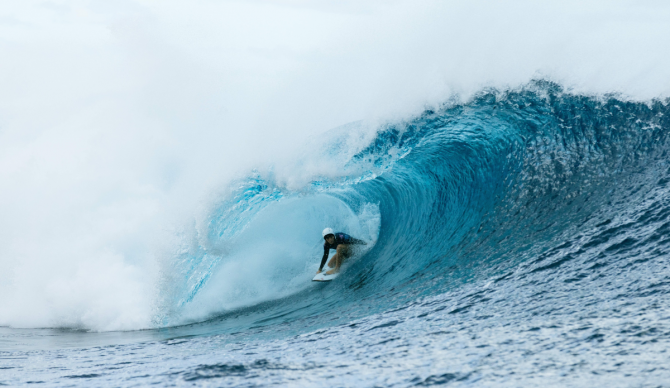Helmets in surfing used to be non-existent but we’ve seen more and more surfers wear them in prominent lineups like Pipe recently. The logic is clear: thicker crowds plus heavy, hollow waves breaking over shallow reefs are a recipe for head trauma. One part of that equation — crowds — is eliminated during competition but that didn’t stop a notable uptick in CT-level surfers donning headgear at this year’s Lexus Pipe Pro, for example. The safety equipment has never been required like it is in many other sports. That still won’t be the case in the upcoming Olympic surfing competition at Teahupo’o but on Friday, the International Surfing Association (ISA) released a statement recommending athletes wear “protective headwear” this summer.
The statement articulated that helmets won’t be mandatory during the Summer Games and therefore wearing them will remain a personal choice for Olympic competitors but the “ISA is promoting their use to ensure the well-being and safety of the athletes,” per a recommendation following consultations with its Athletes and Medical Commissions.
“The incredible waves of Teahupo’o are one of the great wonders of the world. We are so excited to present this awesome venue to billions of people around the world through the Olympic Games,” ISA president Fernando Aguerre said. “The health and safety of the athletes is our highest priority, and as an organization, we highly recommend the surfers utilize protective headwear.”
Chronic traumatic encephalopathy, or CTE, has received enough attention in recent years for sports like American football to invest in research and create new policies around athlete safety at all levels. While the risk of head trauma in surfing has become more obvious and visible at the same time, the research needed to support a WSL or ISA requirement hasn’t been pushed to the forefront in the same way. Still, surfers wearing helmets in heavy surf is becoming more common with or without a requirement.
Kai Lenny suffered a concussion in the Backdoor Shootout earlier this year on what seemed like a harmless day by Pipe standards. Coincidentally, it was his first time ever wearing a helmet in the water at Pipeline — a choice that saved his life. Now Lenny has invested time and energy into developing new headgear that could be used in big wave surfing.
“Based on what I’ve learned working with a few really smart people is that you can actually design these helmets where the crash structure is carbon fiber, which won’t break, even if all the fibers will break internally,” Lenny explained. “You wouldn’t want to use the helmet again, but what it does is it takes all of the force and it spreads it across the helmet. The way the carbon is laid out is going to basically diffuse that impact across the helmet, so that, internally, the fibers break while on the surface level it will probably look as if nothing happened.”


